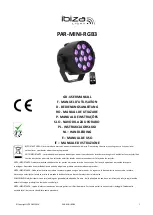
1
Introduction
How Can I Introduce My Samples into the MS Detector?
8
LTQ XL Getting Started
Thermo Electron Corporation
How Can I Introduce
My Samples into the
MS Detector?
You can introduce your samples into the MS detector in a variety of ways.
Refer to
.
The syringe pump is often used to introduce calibration solution for
automatic tuning and calibrating in ESI mode. You can also use this
technique to introduce a solution of pure analyte at a steady rate in ESI
mode, for example, for determining the structure of an unknown
compound.
You can also use a Tee union to direct samples from the syringe pump into
an LC flow (without a column), which then enters the MS detector. This
technique is used to introduce sample at a steady rate and at higher solvent
flow rates; it is used especially for tuning in ESI or APCI on an analyte of
interest. You can also use this technique to introduce a solution of pure
analyte at a steady rate in ESI or APCI.
You can introduce samples from a syringe into the loop of the injector valve.
You can then use the divert valve to introduce the sample into an LC flow,
which then enters the MS detector. This technique is used in ESI or APCI
to introduce pure analytes into the MS detector in a slug. It is useful when
you have a limited quantity of pure analyte.
You can also use an LC autosampler to introduce samples into an LC flow.
This technique is also used in ESI or APCI to introduce a slug of pure
analyte into the LC flow and then into the MS detector.
Finally, you can perform LC/MS experiments by using an LC autosampler
to introduce a mixture onto an LC column. This technique is used with ESI
or APCI to separate the analytes before they are introduced sequentially into
the MS detector.
You can refer to subsequent chapters in this manual and to
LTQ XL Getting
Connected
for plumbing diagrams and methods of sample introduction
.
Table 1.
Sample introduction techniques
Sample Introduction
Technique
Analytical
Technique
Figure Reference
Syringe Pump
Flow
(no LC Flow)
Syringe pump*
ESI automatic tuning
and calibrating
ESI analysis of a
pure analyte solution
LTQ XL Getting
Started
Figure 2-5
















































